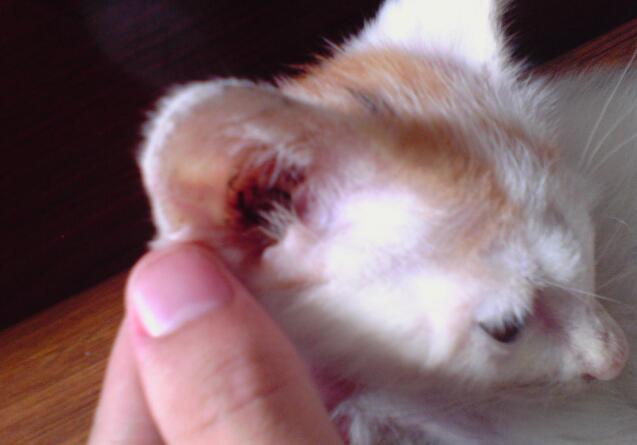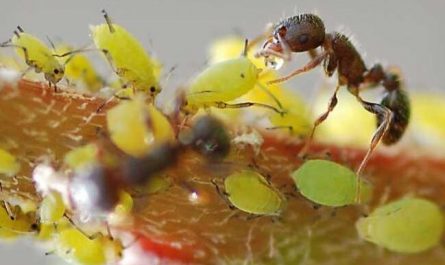Causes of cats getting ear mites
The cat ear itch mites of the genus Otochlear mites are parasitic in the ear canal of cats. They are incompletely metamorphic arthropods. The development process includes four stages: eggs, larvae, nymphs and adults. Ear itchy mites live on the surface of the cat’s ear canal skin and do not enter the inner layer of the skin. Itchy mites have tough horny epidermis and are more resistant than scabies.
Ear mites are highly contagious by contact. When secondary bacterial infections can cause suppurative otitis externa and otitis media, it can cause encephalitis and cranial nerve symptoms when deep invading. If you don’t pay attention to your cat’s health and care, and clean your cat’s ear canal from time to time, you can easily get this type of ear mites.
Ear mites, also known as ear itch mites, are the most common parasites in the ear canal of cats and the highest clinical incidence. Such parasites are extremely contagious. Ear mites live in the ear canal of cats, swallow skin debris and tissue fluid and expose them to the body, causing bleeding and a large amount of ear wax in the ear canal. Adults are about 0.275-0.45 mm long and can be easily observed with a magnifying glass or microscope. The life cycle of ear mites is only 18-28 days, but their reproductive ability and vitality are extremely strong. The number of ear mites in the ear canal of cats can reach thousands, and they can survive for 5-17 days even if they leave the host in the environment.
Prevention and treatment of ear mites
1. Pay attention to indoor hygiene at ordinary times
All pet owners who have raised cats know that ear mites are a parasite commonly found in the ear canals of cats and dogs. Parasites like to live in dark, humid and dirty places, so pet owners do not want their pets to get parasites, so they must start with the usual environmental hygiene. Take care of hygiene in your daily routine, especially the environment around the cat’s cage. Change the litter frequently, and it’s best to clean the cat tray once a week. As long as these hygiene tasks are done well, the chance of cats getting ear mites will be very small.
2. Check your cat’s ears frequently
Pet owners can check their cat’s ears every week to see if there is any dirt, and if there are any dirt, clean them up in time to prevent bacteria from breeding and causing ear mites. In addition, pet owners should pay attention when bathing their cats. If they scrub their ears, don’t forget to dry their ears after bathing. Pay attention to keeping the cat’s ear canal clean while preventing the production of bacteria, because ear mites prefer dark and humid places. Usually pay more attention to the cat. If you see something abnormal in the cat, check immediately to see if there is any problem. Discover in time and treat in time.
3. Stay away from sick cats
If pet owners find that a cat is suffering from ear mites, they must isolate the sick cat from other cats. Ear mites are easily contagious, so be careful not to let other cats get infected. In addition, it is necessary to disinfect the normal range of movement of the sick cat to prevent other cats from being infected. It is difficult to cure ear mites, but as long as the pet owner finds out in time and cleans the cat’s ears with Meowxiang Ear Wash every day, the cat will soon recover.
Symptoms of ear mite disease in cats
When the cat has symptoms of frequent ear scratching and head shaking, there is a peculiar smell (sour smell) in the ear canal, so be vigilant.
1. Check the ear canal. If there are multiple red rash-like nodules, this is caused by the irritation caused by the saliva of ear mites, which makes the external ear canal redness and inflammation.
2. The waxy substance secreted by the sebaceous glands of the external auditory canal gathers in the ear, and the color and appearance are like ground coffee beans (brown dirt).
3. Extensive infection of the auricle, obvious scales and hyperkeratosis. (Observe my cat, there is an increase in white scaly material in the ears).
Examining the ear canal with an otoscope, small, white or flesh-colored cat ear itchy mites can be found moving on the brown exudate. At this time, it can be diagnosed that the cat has ear mites.
Under normal circumstances, cat ears suffer from obvious pain and tenderness in the ears of cats, and they refuse to examine the ears.






